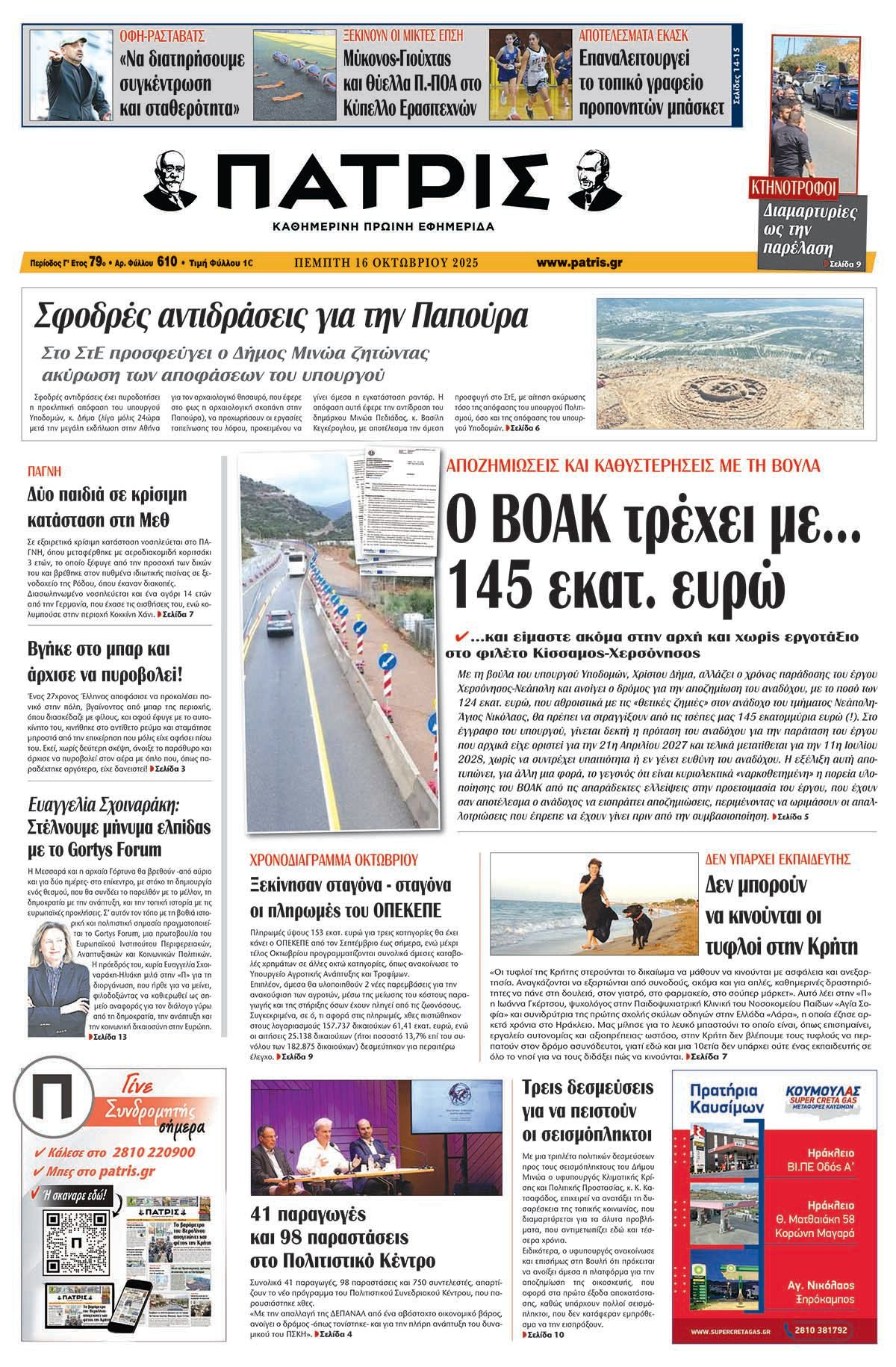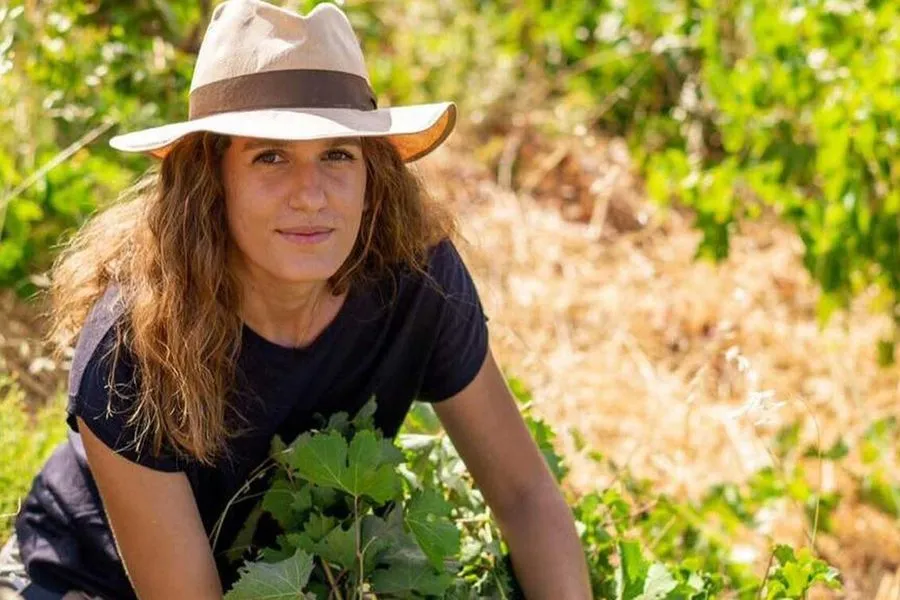“When I first took up my post as an archaeologist at the Ephorate of Rethymno many years ago, a local official once told me:
‘Tell me, how can we knock down the last four meters of the minaret? It’s taller than the cathedral bell tower. When the cruise ships start coming and the Americans wake up in the morning, they’ll think they’ve landed in Turkey.’”
So recounts Kostis Yapitsoglou as we walk through the narrow alleys of one of the best-preserved old towns in Crete.
“Thankfully, the dense urban maze of the 16th century was spared from apartment buildings and protected from such ideas. On one hand, a few enlightened individuals consistently defended it. When the Ottomans left in the early 20th century, for example, locals started tearing down Ottoman structures. But a mayor—Titos Petichakis—put a stop to that. Later, in the 1960s, when tourism was just beginning, famed architect Dimitris Pikionis proposed a plan from above—including even a helipad on the Fortezza and tourist accommodation inside the fortress. Local opposition eventually shelved those plans. In the 1980s, Melina Mercouri also played a major role in saving the area. On the other hand, we didn’t have a port or an airport like Chania or Heraklion, which were quickly swept into mass tourism,” Yapitsoglou explains.
Born to Asia Minor refugees who settled in Heraklion, Yapitsoglou still feels a deep connection to his roots:
“On a trip to Smyrna, my grandfather and I found our family’s old house. The current owner was a Cretan Turk from Chania—a colonel. He welcomed us warmly. Both he and my grandfather were in tears. Whenever I visit Asia Minor, I get chills. But after living in Rethymno for 25 years, I feel like a local.”
Scents and Sounds in the Alleyways
Just as Yapitsoglou’s identity is layered, so too is the urban fabric and architecture of Rethymno’s old town. The town reflects a blend of histories—from the 16th-century Venetians to the Ottomans, who added minarets, hammams, and wooden bay windows (sachnisi) atop Venetian foundations.
“Locals today understand the historical value of the town, even if there are always minor personal interests that pop up,” he notes. “Still, people realize that foreign visitors come precisely because of what has been preserved. That’s the true added value—both aesthetic and economic. A large portion of what were once strictly residential neighborhoods have become Airbnbs or boutique hotels. But the old buildings have been restored using archaeological guidelines and appropriate, often costly materials. And many permanent residents remain. It’s a living city, not a museum set.”
“I remember these alleyways from my childhood summers,” says Maria Maragkou, a journalist and art historian we met at the Museum of Contemporary Art of Crete. “But I think they’ve lost some of their magic, overwhelmed as they are now by cafés and restaurants.”
Still, she’s contributed meaningfully to the city’s modern cultural life, curating many bold and pioneering exhibitions.
“Given its character and size, Rethymno could be a little gem—a boutique city in every sense,” she adds. Just down the street is the Indian restaurant Saffron, a reminder of the multicultural tapestry of Rethymno. Around 1,000 Indians made the town their home in the 1990s after being hired by a Cretan business.
Gurnam Singh Dhulku, who first came to Greece after finding work on a Greek-owned ship, now calls Rethymno home. His son is studying at the National Technical University of Athens, and his daughter is preparing for national exams.
“I’ve lived here since 1993, and both my children were born in Rethymno. They see Crete as their homeland—India is just a vacation spot for them,” he tells us on the day he was leaving for a visit to Punjab.
“I’ve never faced racism here. It’s peaceful and safe. I don’t even lock my bike when I make deliveries.”
The Soundtrack of Rethymno: Tradition in Every Note
Rethymno’s soundtrack is a mix of suitcase wheels clattering over cobblestones and Cretan music pouring from speakers. In the new town, we visited the workshop of Manolis Stagakis, grandson and namesake of the man who revolutionized the modern Cretan lyra. The lyra model he crafted is still referred to as the Stagakis type.
“In the old days, there were no professional instrument makers or standardized lyra types,” Stagakis explains. “Furniture makers handled the repairs. My grandfather started out fixing them, and then began modifying the instrument, borrowing features from the violin. His innovations were so successful that they established the model still used today. He was also a musician.”
“In Crete—and especially here in Rethymno—there’s no family without at least one or two musicians,” he says. “This isn’t about reviving tradition; it’s about continuing it. Cretan music keeps giving birth to new songs and albums. It’s alive. That’s why it still resonates. It can change your mood, and it takes on the personality of both the player and the craftsman. If you don’t build it with anapai—your calm, your patience—it won’t turn out right.”
Stagakis’ words echo what Yapitsoglou told us earlier:
“Locals today understand the historical value of the town, even if there are always minor personal interests that pop up. Still, people realize that foreign visitors come precisely because of what has been preserved. That’s the true added value—both aesthetic and economic.”
Hospitality as a Heritage
We were joined at Stagakis’ workshop by Dimitris Kalaitzidakis, a tourism veteran with nearly 50 years of experience. As a leading figure at Grecotel, he has personally welcomed everyone from everyday tourists to global figures like Hillary Clinton and Michael Dukakis. He once launched a major campaign to support local craftsmen and artisans in Rethymno.
“The early hoteliers of Rethymno, like Nikos Daskalantonakis, learned hospitality at home—from their mothers. It was passed down through generations,” Kalaitzidakis explains. He himself was trained by his grandfather and father. After studying in both Greece and the U.S., he introduced the first Cretan breakfast buffet at a hotel.
“Today, people are searching for authentic experiences and real flavors, because those are often missing in urban life,” he says. “Crete offers that opportunity, especially since the average stay is 8.5 days. That gives visitors time to explore both the mountains and the sea.”
Kalaitzidakis recently played a key role in establishing a Center of Excellence for Health and Wellness, based in Boston and partnered with Grecotel. The initiative comes from Greek-American professor Stefanos Kallis of Harvard Medical School’s Department of Public Health. Its goal? To globally promote traditional Greek—especially Cretan—nutrition as a scientifically proven model for healthy living.
Three international conferences have already taken place in Crete with top researchers from Ivy League universities. But these gatherings go beyond science—they offer the full Cretan experience:
“Delegates exchange ideas while harvesting olives, sampling fresh oil, and tasting local products,” Kalaitzidakis says.
Kallis’ innovative idea is that lifestyle change must start with students. He offers a compelling example:
“The head of dining services at the University of Massachusetts is responsible for 55,000 meals a day. He’s now committed to using Greek products—olive oil from Crete, legumes, fresh fish from Kefalonia. Their food program has been ranked the best in the country by students themselves—for six years running.”
In New England alone, universities serve 108 million meals per academic year.
“That’s a huge opportunity for Crete and for Greece,” Kalaitzidakis says.
“In the U.S., students are seen as customers for four years—but also as future leaders.”
From Pioneers to Public Accountability
Pepi Birbiraki, part of the second generation of Rethymno’s hoteliers, has witnessed the evolution of local tourism from the 1970s onward. Her family—originally olive oil merchants—were among the first to see the industry’s potential.
“My father, Manolis, and his brother Nikos—despite Nikos being exiled during the junta—built Rethymno’s first modern hotel in 1972, the Ideon, with 150 beds. It even hosted the first Scandinavian charter group,” she recalls.
“I was 12 when it opened. The old town was half-ruined back then—full of cockroaches and rats. And yet, our hotel had an elevator that most locals had never seen before, a maître d’ hotel, and a chef.”
Built without the strict regulations of today, the hotel had four floors and modern amenities. In 1984, Pepi herself opened one of Rethymno’s first boutique hotels in the old town, just as awareness around architectural preservation was growing.
Years later, as a deputy mayor, she stood at an architectural conference and offered a public apology for what her family’s building had done to the historic area.
“Now, the big challenge is preparing for the new airport in Kastelli,” she says.
“It will triple the number of incoming tourists. But what about infrastructure? In the 1980s, tourism and the university arrived almost simultaneously. Our population went from 15,000 to 45,000—plus 12,000 students. We need to start planning now, for both locals and visitors.”
She pauses and takes a sip of wine.
“They say we’re Europe’s waiters. That’s wrong.
We’re the hosts of people’s holidays, and to us Rethymniots, that’s something sacred.”
The Stigma and the Silence
As a former Deputy Mayor of Tourism with multiple terms in office, Pepi Birbiraki had to face one of Rethymno’s most sensitive and complex issues: the darker side of its identity.
“In 2022, in a village in Mylopotamos, a group of German tourists was attacked by locals after they complained that a farm truck had damaged their rental car,” she recounts.
“They were punched, threatened with a knife, and nearly rammed off the road. Of course, as local and regional authorities, we stood by the tourists—who were clearly traumatized—and supported them in filing a report.”
At the same time, Birbiraki had to manage the risk of reputational damage for the region:
“These incidents hurt us Cretans more than they do the foreigners. We suffer deeply for the actions of a small caste of people from the mountains, whose behavior is dangerous.”
She was the only one willing to go on record about what many consider Rethymno’s black mark.
The problem doesn’t end with isolated incidents. It often begins with children—some of whom rarely attend school. Issues include cannabis cultivation and trafficking, illegal firearms, substance abuse, domestic violence, and even threats against teachers.
Perhaps most troubling is the state’s tolerance:
“Massive EU subsidies go to certain shepherds who manipulate the system—falsifying livestock counts by swapping ear tags. Meanwhile, honest farmers who struggle daily are left with nothing.”
Cheese, Wild Greens, and Wine Rooted in Memory
When we asked about lawlessness in Mylopotamos, Manolis Paterakis—a shepherd and producer of some of Crete’s finest organic yogurt—simply gave us a look. He’s also a member of the Panhellenic Livestock Breeders’ Association. For him, the biggest concern right now is basic survival.
“My grandfather and father came from large shepherding families and grew up in hardship. Everyone had a role, like in a monastery—each monk with their own duty. That’s how things worked,” he explains, clutching his shepherd’s crook and wearing a hands-free earpiece.
“I have many siblings, and we have five times the animals our father did. But we still struggle. The older generations didn’t have to deal with property tax, social security fees, rising energy costs, bank loans, or buying land to grow animal feed. They didn’t have to comply with today’s dairy regulations or cope with climate change and three-month droughts.”
“I’m at the edge of the world, alone with my animals. If I fall off a cliff, no one will even notice. I sacrifice my personal life, have no holidays or schedule, and still can’t make ends meet. The government needs to realize that island-based livestock farming is nothing like it is on the mainland.”
Gathering Greens and Holding on to the Land
In the village of Atsipopoulo, we visited Manolis Papadogiannakis, owner of a small taverna and arguably the island’s greatest expert on wild greens, mushrooms, and snails. He served us foraged herbs we had never seen before—let alone tasted—with incredible flavor.
“To someone unfamiliar, all wild greens look the same,” he says.
“But for me, walking and looking down at the earth is like bumping into old friends. I know their names and feel joy when I see them.”
He grew up in a village without electricity.
“My parents were country folk. My mother taught me the basics, but I surpassed her. Not just because I read books or asked around. I had a car, so I could explore farther—up to 30 kilometers from here.”
“If war broke out tomorrow, I could feed myself and thirty more. When I was a kid, we ate meat once a week. In between, we had greens, beans, snails. Maybe rabbit or chicken—but we didn’t even count those as meat. We didn’t eat much fish either—my father brought it from town. Until I was 18, I thought the sea only had sardines, smelt, and red mullet.”
He opened his taverna 27 years ago and now knows over 25 types of wild greens, along with countless herbs, mushrooms, and flowers.
“Finding an asparagus or a sprig of wild grape brings me joy. When I’m out foraging, I forget everything else.”
As for how he sees his fellow islanders?
“The people of Chania are more proud, the Heraklion crowd are traders…
We Rethymniots are the sentimental ones of Crete.”
A New Generation of Winemakers
Iliana Malihin, an Athenian by birth, returned to her mother’s native village of Lampini, Rethymno, around age 20. With studies in agronomy, oenology, and experience in Santorini, she released her first wine at just 25—a blend of Vidiano from Fourfouras and Assyrtiko from Santorini, made in collaboration with winemaker Spyros Chrysos.
While searching for Vidiano vines, she discovered abandoned plots in the village of Melampes and made it her mission to revive this indigenous variety. She started with a handful of growers and now works with over 40. She insisted on organic cultivation and produced stunning wines.
Then came the devastating wildfires of 2022.
“21,000 hectares burned. We were in danger. I was in the car with two girls, trying to save whatever we could. The heat wave was so intense it shook the vehicle. That region has burned 14–15 times since 1964, yet still has no fire protection. After seeing the damage, I collapsed for a week with a 40°C fever. It felt like I’d lost a family member—just like when my father died.”
Once she recovered, she launched a campaign called “Save the Vines”, raising funds for advanced fire prevention systems. She didn’t keep a single euro for herself—she gave it all back to the land.
“Before the fire, we had 700 acres of ancient vineyards. Now, probably half remain.
My dream is to restore those abandoned plots, distribute cultivated land, and keep this place alive. Because that’s our real heritage.”
“Why invest only in concrete and hotels?
A visitor wants to taste authentic Crete—a tomato with real flavor, cheese that tastes of the land, wine with character.
And paired with a beautiful landscape, the mountains and sea, that’s what brings people back—not just being packed into a hotel.”
SOURCE: kathimerini.gr


